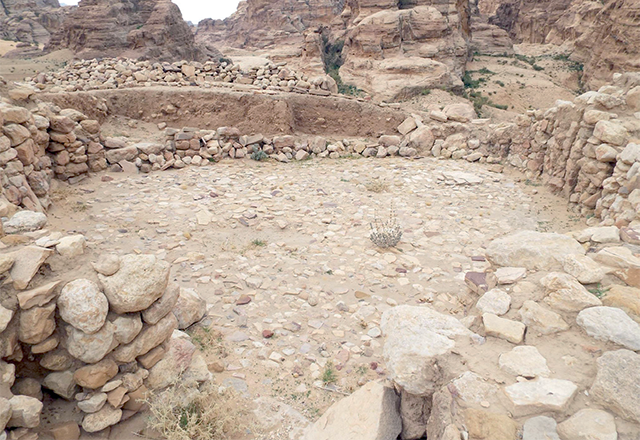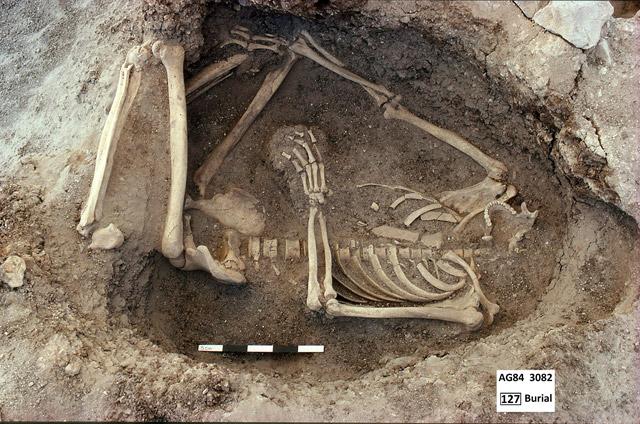You are here
Cultic spaces and shrines in Ain Ghazal, Beidha
By Saeb Rawashdeh - Oct 31,2023 - Last updated at Oct 31,2023

A major Neolithic site Beidha, located a few kilometres north of Petra, has three periods of occupation: Natufian, Pre-Pottery Neolithic B and Nabataean (Photo of Saeb Rawashdeh)
Hunter — gatherers in the southern Levant based their social identity on small groups of consanguineal (blood-related) and affinal( through marriage) members.
“With the emergence of sedentism, identity of group intensified, concentrating on unilineal identity tied to a territory,” said Professor Emeritus Gary Rollefson from Whitman College.
This identity was celebrated through ancestral ties with mythical founder of the group by the practice of the skull cult, selecting one member of each generation, Rollefson continued, adding that each household in the Middle Pre-Pottery Neolithic B and probably the Pre-Pottery Neolithic A observed this link in the house by burying the connecting person beneath the house floor, re-exposure to retrieve the skull, and the recreation of the face of the dead by using plaster.
“The house was both a dwelling and a ritual centre,” Rollefson highlighted, adding that beyond the household, the group was represented by images of mythical ancestors in the form of statuary. These statues, which were periodically replaced, were on display in a corporate ritual building,” the scholar underlined.
Furthermore, as long as a population of the village remained relatively low, inhabitant would not compete for food resources and the community solidarity would remain intact. The mass migrations from the West Bank and the Jordan Valley to the highlands of Jordan changed the settlement pattern, Rollefson said.
“At sites like Ain Ghazal [located on the north-eastern outskirt of Amman] the centrifugalforces on the community had to be assuaged by a strong shift to a communal rituals,” Rollefson pointed out.
Furthermore, the British archaeologist Diana Kirkbride( 1915-1997) excavated three subterranean structures at Beidha, near Petra, which could be a sanctuary of the whole site.
“The architectural feature that sets it apart from the domestic buildings in the village lies in the flooring of fine, very clean gravel,” Rollefson elaborated, adding that a mineralisation was confined to the “sanctuary” area.
“In the centre of the building was a large, flat sandstone slab set on the long edge perpendicular to the long axis of the building. Two other large sandstone slabs were laid flush with the floor, one in each of the ‘halves’ delineated by the upright slab,” Rollefson noted, adding that Kirkbride remarked that she “was forced, nevertheless, to submit that these carefully built edifices with their huge flat stone slabs and basins have to do with some religious observance”.
The role of distinctive, non-domestic buildings in Beidha were interpreted as corporate or integrative buildings.
“These were the venues for conducting suprahousehold and decision-making activities, and also related to ceremonial or cultic activities,”Rollefson underscored.
Related Articles
AMMAN — Anthropologist Gary Rollefson’s nearly four-decade long research into the anthropology of prehistoric Levantine civilisations began
AMMAN — During the filed season in 1996 at Ain Ghazal on the north-eastern outskirts of Amman, the archaeological team discovered a rectangu
AMMAN — Human burials throughout Jordan, Palestine, Syria and Lebanon present a pattern that is “bizarre” compared to modern practices, acco














